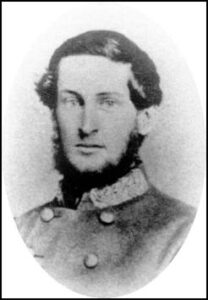THOMAS M. LOGAN
Posted By : manager-2
Posted : January 30, 2024
FROM PRIVATE TO GENERAL, CHARLESTON’S THOMAS M. LOGAN
(1840 – 1914) By Compatriot Michael Thomas
Over 400 soldiers in the Confederate army were commissioned as generals. Charlestonian Thomas M. Logan was one of the very few among this number who rose from the rank of private. By all accounts, young Logan was endowed with exceptional abilities that served him well during his entire life.
The son of a judge, Logan graduated first in his class at South Carolina College (now the University) in 1860 and enlisted in the Washington Light Infantry in early 1861. His company became a part of the Hampton Legion Infantry Battalion the following June. It was then that he received his first promotion by being elected 2nd Lieutenant. The Hampton Legion distinguished itself at First Manassas in July 1861 and Logan was elected Captain of his company shortly afterward. In this capacity, he saw fighting in several major battles in 1862 including the Peninsula Campaign and the Seven Days Battles in June where he incurred a severe foot wound. He returned to his company in time for the 2nd Battle of Manassas in August and displayed such gallantry at Sharpsburg in September that he was promoted to Major. A month later, he was promoted to LT. Colonel.
The Hampton Legion Infantry saw no further substantial action until the autumn of 1863 when General James Longstreet took his Corps to Georgia. The Legion missed the Battle of Chickamauga but was quite active in Longstreet’s subsequent engagements at Chattanooga and Knoxville. Logan’s abilities were put to good and effective use in this period by leading Longstreet’s advance guard and commanding the Corps sharpshooters at each location. His daring and skillful leadership met with Longstreet’s approval.
In May 1864, the Hampton Legion Infantry was converted to a cavalry command and placed in Brigadier-General Martin Gary’s brigade in the Department of Richmond commanded by Lt. General Richard Ewell. In this transition, Logan was promoted to Colonel thus succeeding Gary as the Legion’s long-time commander. Gary’s Brigade, stationed north of the James to protect Richmond, saw a variety of actions over the next several months. It was heavily involved at Riddell’s Shop in June where Logan was wounded in both arms and again at Nance’s Shop 10 days later. The brigade provided distinguished service in October’s Battle of Williamsburg Road by driving a much larger Union cavalry force from the field and then utterly routing a brigade of USCT infantry.
In December 1864, Matthew Butler was promoted to Major-General and elevated to division command. Logan was nominated for Brigadier-General and to assume command of Butler’s old bri-gade. The nomination failed when Congress did not confirm it and this is where Logan’s body of work over the years was acknowledged and presented to Congress most emphatically. A second nomination was submitted with lengthy letters of support from Generals Long-street, Ewell, Butler, and Gary with each attesting to his skill as a commander and to his valor. These endorsements, along with whole-hearted support from Generals Wade Hampton and Robert E. Lee, led Congress to confirm Logan’s appointment as Brigadier-General on February 15, 1865, just 16 days short of his 25th birthday. With this promotion, Logan became the 7th member of the Hampton Legion to be commissioned as a general in the Confederate army.


Thats my 3rd great grandfather ❤️